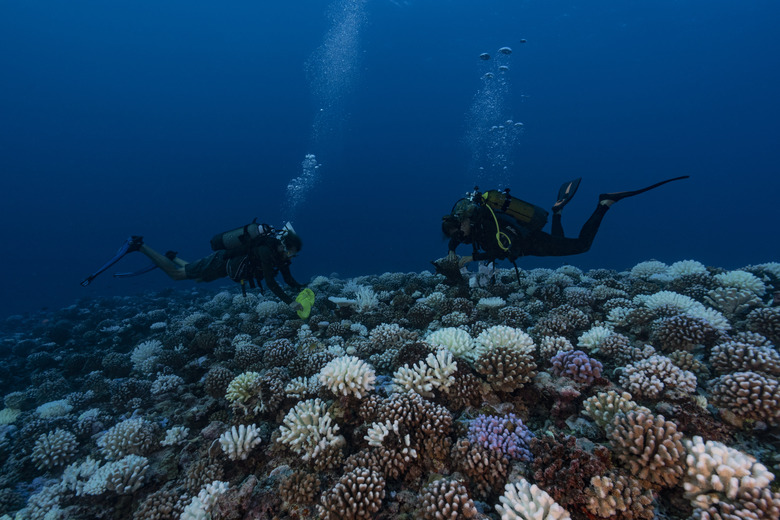Underwater Observatory Mysteriously Disappears In The Baltic Sea
A large underwater observatory disappeared in the Baltic Sea – despite weighing more than 1,000 pounds and being in a protected research area. Located near the coast of Germany, the Boknis Eck observatory vanished without a trace in August. Speculation about what happened to the station continues.
Boknis Eck Vanishes
Boknis
Eck Vanishes
The Boknis Eck was an underwater observatory and monitoring station for the GEOMAR Helmholtz Centre for Ocean Research in Kiel. Weighing 1,630 pounds, the observatory collected important data at the bottom of the Baltic Sea in a restricted research area. The station didn't have any people on it, but it sent information back to GEOMAR on a consistent basis. The entire underwater observatory cost $330,000.
"Every month since 1957, environmental data such as temperature, salinity, nutrients, oxygen or chlorophyll have been collected at a specified position at the outlet of the Eckernförde Bay, allowing conclusions to be drawn about the state of the ecosystem of the south-western Baltic Sea," GEOMAR said in a translated comment.
Although researchers have been collecting data in the area since 1957, Boknis Eck was installed in 2016. In August 2019, Boknis Eck suddenly stopped transmitting data. GEOMAR initially believed this was a transmission mistake, but divers confirmed there was a bigger problem a week later.
The entire underwater observatory had disappeared, and the only thing left was the torn cable, which connected the station to the land, with no other evidence. Months later, researchers still don't know what happened to the station.
"When the divers reached the bottom of the sea last week at the observatory's location, they found only the torn off land cable. It was completely shredded," Hermann Bange from GEOMAR said in a translated comment.
What Happened to Boknis Eck?
What
Happened to Boknis Eck?
After Boknis Eck vanished, GEOMAR tried to find it on its own unsuccessfully. Now, it has asked anyone with information to come forward.
"At first, we tried to find the devices with our own research and other diving applications. So far without success. That's why we would be very happy about the hints," Bange said in a translated comment.
GEOMAR believes the station was too big and heavy to be eaten by a marine animal. It also doesn't think a storm or currents could have moved the underwater observatory. It's unlikely that the station would have disappeared on its own without human interference.
Although Boknis Eck was in a protected research part of the Baltic Sea that should have been off-limits to boats, it's possible that an illegal boat made it into the area. One possibility is that the station was stolen because it contained metal that could be sold. Scavengers may have taken it, cut the cable and disappeared before they could be detected.
Another possibility is a boat may have been fishing illegally in the Baltic Sea and accidentally cut the cable while dragging away the station. Bange believes this is the most likely reason for the disappearance of Boknis Eck since it was made from steel, which isn't worth scavenging.
GEOMAR's Plans for the Future
GEOMAR's
Plans for the Future
At this time, it doesn't seem likely that GEOMAR will be able to recover Boknis Eck. No one has come forward with any information, and there is no trace of the station in the water. Researchers want to build a new underwater observatory, but it will take time.
"However, the data that we collect is downright priceless. They help research to register changes in the Baltic Sea and possibly take countermeasures. Therefore, we will try to get the observatory back up and running as soon as possible," Bange said in a translated comment.
References
- Smithsonian: A Huge Underwater Observatory Has Vanished Without a Trace
- Popular Mechanics: Underwater Data Station Disappears
- Science Magazine: Suspect Surfaces in the Mysterious Case of the Underwater Research Station That Vanished
- CBC: Undersea Science Observatory Mysteriously Vanishes from Seabed
Cite This Article
MLA
Bandoim, Lana. "Underwater Observatory Mysteriously Disappears In The Baltic Sea" sciencing.com, https://www.sciencing.com/underwater-observatory-disappeared-13722448/. 23 October 2019.
APA
Bandoim, Lana. (2019, October 23). Underwater Observatory Mysteriously Disappears In The Baltic Sea. sciencing.com. Retrieved from https://www.sciencing.com/underwater-observatory-disappeared-13722448/
Chicago
Bandoim, Lana. Underwater Observatory Mysteriously Disappears In The Baltic Sea last modified August 30, 2022. https://www.sciencing.com/underwater-observatory-disappeared-13722448/
